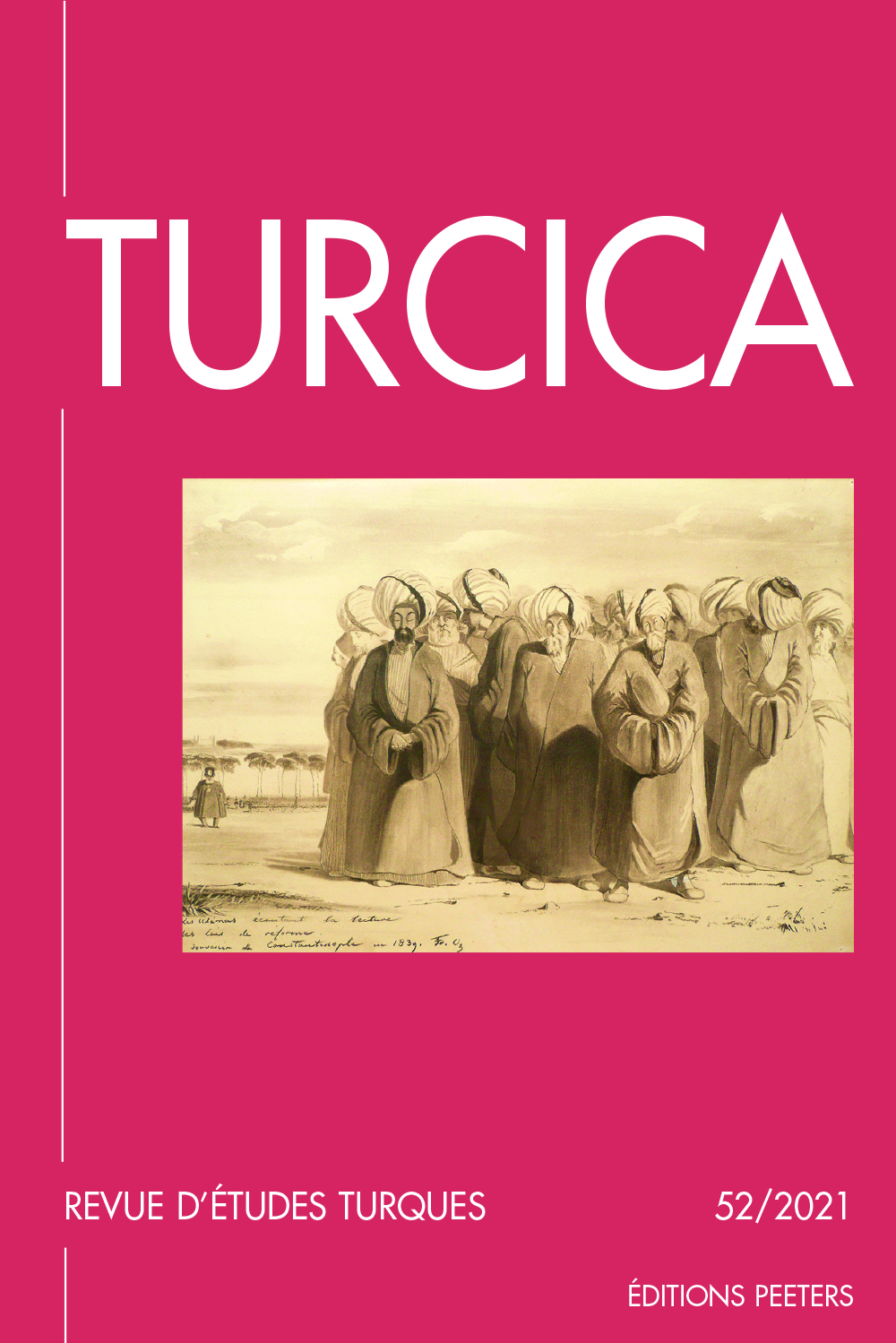 previous article in this issue previous article in this issue | next article in this issue  |

Preview first page |
Document Details : Title: Faire famille à travers la correspondance Subtitle: Lettres et cartes postales familiales d'un haut fonctionnaire ottoman (1911-1928) Author(s): ZERMAN, Ece Journal: Turcica Volume: 52 Date: 2021 Pages: 373-418 DOI: 10.2143/TURC.52.0.3289814 Abstract : Cet article analyse un corpus de lettres et de cartes postales issu des archives personnelles et familiales de Said Bey (1865-1928), enseignant et haut fonctionnaire ottoman. La série étudiée comporte une trentaine de lettres et cartes postales de sa correspondance rédigée à Berlin, Ankara et Istanbul entre 1911 et 1928, toutes de la main de Said Bey et adressées à différents membres de sa famille. L’objectif est double: il s’agit, d’une part, d’analyser les pratiques d’écriture et de lecture et d’autre part, de s’interroger sur les dynamiques familiales qui ressortent de ces écrits. On s’interroge ainsi sur le rôle de la correspondance dans la construction et le maintien des liens familiaux, sur la manière dont la pratique épistolaire et les lettres elles-mêmes représentaient et en quelque sorte faisaient la famille. Dans l’espace des possibles qu’offrent les archives personnelles et familiales, l’étude de cette correspondance permet d’envisager, dans toute leur complexité, des thématiques liées à l’espace domestique, la constitution du foyer, l’expression des émotions, l’expérience du voyage, les pratiques de lecture et d’écriture au début du XXe siècle. This article analyzes a series of letters and postcards, part of the personal and family archives of Said Bey (1865-1928), an Ottoman teacher and official. The collection consists of thirty letters and postcards sent from Berlin, Ankara and Istanbul, between 1911 and 1928. They were all written by Said Bey and addressed to different members of his family. The aim of the article is to analyze, on the one hand, the writing and reading practices and on the other hand, to discuss the family dynamics portrayed in this correspondence. In this regard, the focus is on the role of correspondence on the construction of family relationships and on the ways in which the epistolary practice and letters were representing and, in a sense, constructing the family. In a framework opened by personal and family archives, the study of this correspondence allows us to make a sense of a variety of themes related to domestic space, constitution of the household, expression of emotions, travel experience, reading and writing practices at the beginning of the twentieth century. |
 |


